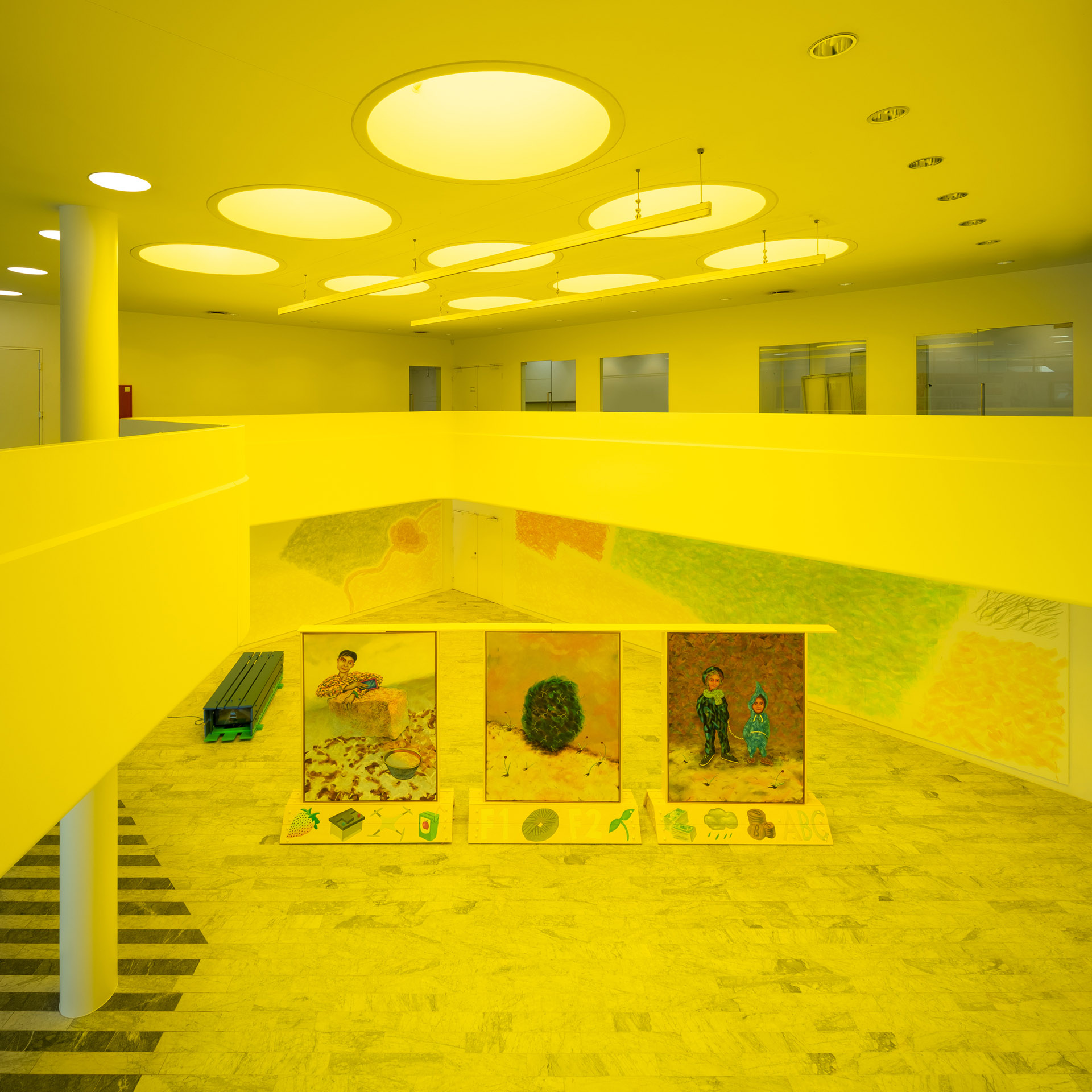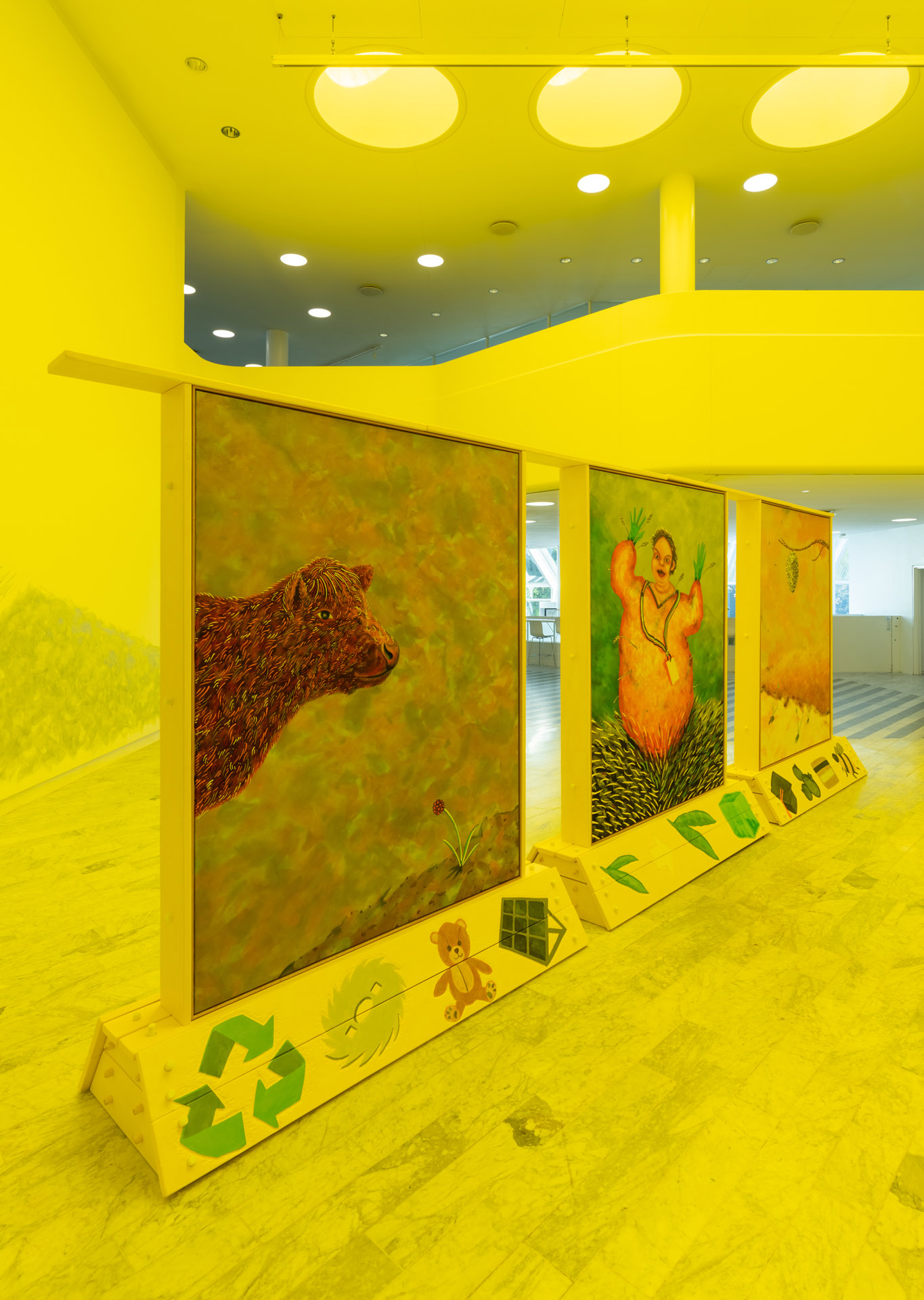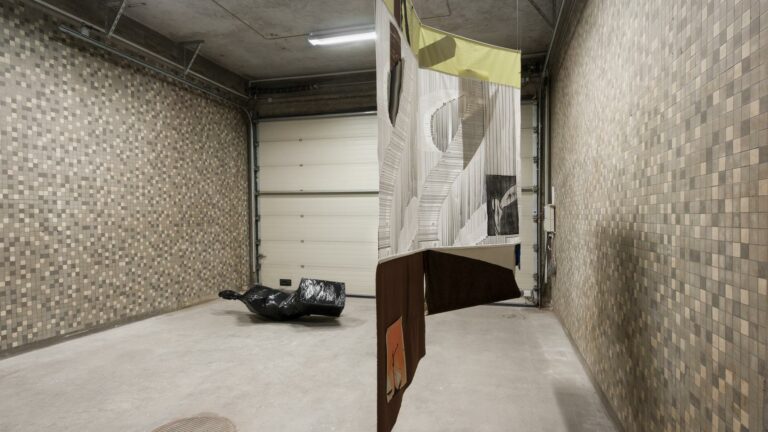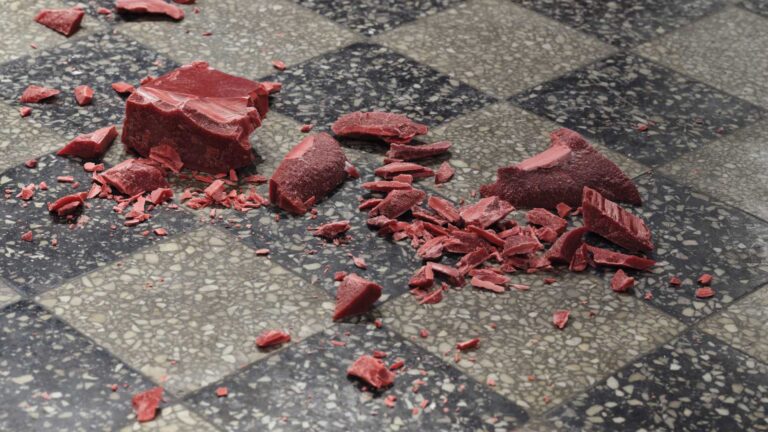Artist: Magnus Andersen
Exhibition title: Agrication
Venue: Tranen Contemporary Art Center, Hellerup, Denmark
Date: August 25 – November 11, 2020
Photography: David Stjernholm / all images copyright and courtesy of the artist and Tranen Contemporary Art Center
‘Agrication’ is a contraction of the words ‘agriculture’, ‘vacation’ and ‘education’. It is also the title of Magnus Andersen’s first solo exhibition in a Danish institution. With Agrication the artist further develops his painterly universe that ranges from works on canvas and walls to wooden relief carvings, sculpture, video and recycled objects. The exhibition takes a long hard look at the present and provides a take on a potential future. Farm and forest kindergartens have been optimised. The new scenario is forced educational trips to the countryside for children at kindergartens and schools set to reinvent and realise a new rural culture.
Agrication processes contemporary desire for, and dreams of rural idyll. The total installation reflects the artist’s notion of a not too distant future, which is blurred by a nostalgic longing for a simpler life in the past. The focal point of the exhibition is a hexaptych, i.e. a wall featuring 6 paintings, that bisects the room. A cloud-computing farmer lounges in a pile of hay. A cow, chewing cud, peeks into the picture. A few wasps swarm around their nest. Magnus Andersen’s paintings evoke now-defunct, self-sufficient smallholdings before animal husbandry turned into mass production. The exhibition recalls rural life as it once was — or rural life as it never was but still haunts an increasingly urbanised world longing for an alternative.
Up until a century ago, rural life for serfs and farmhands was a struggle to put food on the table. Today, COOP sells packages to children and families. For a few hundred Danish kroner they can become a ‘farmer for a day’. Danish Polymath N. F. S. Grundtvig’s words in a hymn from 1839 that “the sun rises with the farmer, not with the scholars” regains meaning at a time when farming culture is just about dead. Of the hundreds of thousands of farms that once made up the fabric of life in Denmark, only about 8,000 full-time holdings remain. Agriculture no longer sets the national mood, but accounting as it does for one forth of the overall CO2 emissions, it still animates public opinion. It is a global problem and part of the local solution.
In Magnus Andersen’s vision of the future, farm life is still the stuff of dreams, but in order to partake of that dream, schooling and discipline are required. One painting depicts an educator of Green Transition, sprouting like a jack-in-the-box. Next to him are a pair of little boys wrapped up in snow suits, kept on a short lead with ropes around their waists. Enlightenment may from the Danish soil arise, but light floods the installation from above. Tranen’s skylights have been filtered, so a pale, yellowish tinge permeates the exhibition. The tones of the pictures evoke autumn, or rather an increasingly scorched earth under a baking sun.
In the mid-19th century, 80 per cent of the population lived in the countryside. Today they live in towns and cities, imagining what rural life might be like. In the last couple of years, the trend has reversed. More people are moving away from the metropolis than to it. And in the kitchen, the cultural life and the entertainment industry, people of all kinds are toying with moves in the same direction. Beyond political 2030 and 2050 plans, a green transition germinates across our culture from reality TV shows, New Nordic and Årstiderne to aquaponics, cannabis grow tents for vegetables and permaculture in the back garden.
The exhibition expands the current trend into future rural areas in the shadow of the climate crisis. Urbanisation is accompanied by so-called counter-urbanisation. Magnus Andersen envisages a society in which civic duty now stipulates the pursuit of ecology and biological diversity; not only to remedy an evil, but also as a basis for a new advanced lifestyle in harmony with nature. Flexible housing, teleworking, self-driving cars and futuristic visions of hyperloop foster the dream of withdrawing from urban stress, while remaining connected from a distance.
In ‘infobition’ format, painted wooden boxes present farming and biotech simulators that teach children and young people about machines and genetic manipulation of crops as a mandatory component of their general education. The seductive, yet unattainable idyll is expressed as a dream picture, in which the future is stuck in the past and charm is haunted by eeriness.
The exhibition conjures up a landscape that blends steampunk à la Mad Maxand Silicon Valley-esque Biedermeier. Some people live in the remnants of an ancient civilisation; others in the next one with Tesla and solar cells. Life in harmony with nature is also an existence in a divided and tense culture. The view of the landscape is obstructed by windbreaks and electric fences. Magnus Andersen’s paintings rise like a barrier in front of the abstracted rural expanse painted onto the walls of the space.
The hexaptych indicates the new socio-economic boundaries that divide the country. The floor below the paintings is scattered with used car batteries from which those with limited means and resources extract the last power to operate their electric fences. A kind of upside-down water trough props up the canvases. The surface is adorned with a stream of emojis for GMO, XL pea pods, climate-tolerant white strawberries, bitcoins, solar cells etc. carved into the wood. The new rural world is also a new language that defines the framework for communication; a digital form of communication, which, when filtered through Magnus Andersen’s tradition-conscious painting and wood carving work, already seems to be a thing of the past. The impossible and seductive dream, which the characters in the portraits populate, is apparent in the characters’ faces — in unreal skin tones such as yellow and purple, as if they are both uncomfortable and drunk; as if they are both slightly high on their visions of the future and anaesthetised by the tranquillity of the great outdoors; as if they have departed from one world, but not yet arrived in the next one.
Toke Lykkeberg
Director of Tranen
Magnus Andersen (b. 1987) lives and works in Copenhagen. He studied visual art at the Royal Danish Academy of Fine Arts in Copenhagen and Städelschule in Frankfurt am Main. He has had solo exhibitions at Neue Alte Brücke in Frankfurt, Gio Marconi in Milan, Kunstverein Wiesbaden and Biana D’Alessandro in Copenhagen. He also runs the exhibition venue Bizarro with Louis Scherfig and Mai Dengsøe.
Agrication is the ninth exhibition in Tranen’s programme of extemporary art. The focus is on contemporary art that is not primarily focused on our contemporary condition. When everything from climate to technology evolves at ever greater pace, the present becomes ephemeral and intangible. The present starts to shrink. Meanwhile, our knowledge of the past increases. Speculations about the future abound. As part of this development, a lot of art is no longer contemporary — which literally means ‘with time.’ Instead, art is rather ‘extemporary, i.e. ‘out of time’.
The exhibition is supported by the Danish Arts Foundation.














































